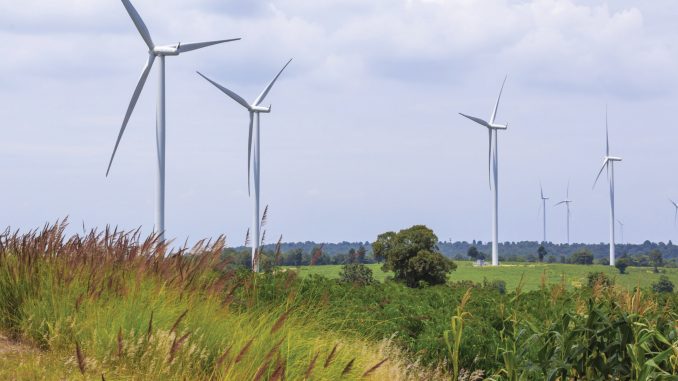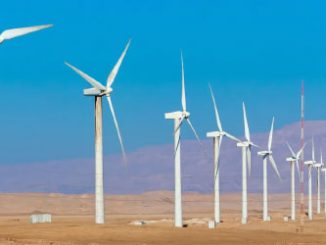
The dynamism of the Indian renewable energy sector is evident from the constantly changing regulatory, financial, competitive and business models. Wind and solar power tariffs have fallen steeply, thereby boosting investor confidence in the sector while squeezing developer margins. Such developments have compelled companies to transform their business models to cater to the growing demand for innovation in order to succeed in the evolving market.
Kshema Power is one such company that has used innovative business models and succeeded in becoming a leading player in the wind power engineering, procurement and construction (EPC) space.
Company background
Kshema Power began as a proprietorship firm with a vision to harness wind energy in Kerala. However, low wind power potential in the state and the consequent lack of commercial feasibility for capital-intensive wind projects turned the company’s attention to the wind-rich state of Tamil Nadu.
Kshema Power won its first order in 2003 to procure land for a 50 MW wind farm for Denmark-based NEG Micon (later acquired by Vestas). This was followed by two more projects from the same client and led to the company’s transformation from a proprietorship to a complete EPC solution provider.
During the company’s growth phase, from 2005 to 2009, Kshema Power was involved in major wind farm development. Barring wind turbine procurement and installation, it undertook all works such as identifying and procuring land, getting the necessary approvals, studying historical wind data, erecting civil foundations, and undertaking transmission line works. In 2009, the company achieved a major milestone of developing 500 MW of wind power capacity for Vestas.
In 2014, the company forayed into the solar power EPC segment with an order to develop 50 MW of capacity for SunEdison in India. In 2016, the company marked another milestone, achieving a cumulative installed wind capacity of 2,500 MW.
Capacity profile
Kshema Power has a total of 2,500 MW of wind capacity. Of this, 1,800 MW is installed in Tamil Nadu, which has been the key focus area for the company. Another 500 MW has been developed in Madhya Pradesh and the remaining is in other states. The company also has 25 MW of projects in Kerala, of which 10 MW is under construction and 15 MW is operational. The company has focused only on providing EPC services to its clients and has consciously stayed away from the operational aspect of wind farms. This is primarily because most of its clients are original equipment manufacturers (OEMs) with end-user agreements and power purchase agreements in place, which limits the scope of work for companies like Kshema.
In addition to wind, Kshema Power has undertaken grid integration of about 90 MW of solar power capacity. Further, the company has set up 400 km of transmission lines and 650 MVA of substations. Going forward, the company is looking to undertake 100 MW of turnkey projects in Karnataka. According to Ramakumar P., chief marketing officer, Kshema Power, the company’s focus in solar is likely to be on the rooftop segment for commercial and industrial customers. These projects will be developed under the capex model as opposed to the emerging RESCO (renewable energy service company) model.
Business model
The company believes that the shift from feed in tariffs to competitive bidding-based project allocation is a positive move for the wind power segment. Kshema Power’s business model involves building large wind farms under the capex model (the company provides upfront investment to develop the farm) and then selling it to customers or OEMs, which further sign contracts with discoms or end users for power procurement.
Kshema Power is in the process of developing a 400 MW wind farm in Tamil Nadu. It is likely to sell the farm to the winners of the wind capacity auctioned by the Solar Energy Corporation of India (SECI) in the future. The company’s model of building large wind farms helps developers procure large capacities at a single wind-rich location as opposed to developing smaller multi-location wind power projects. To this end, the company believes that competitive bidding will be the preferred route. Kshema Power does not sell its assets to companies that are looking to offset their internal power consumption as captive consumption only caters to the short-term vision and does not provide enough returns for such large wind farms. Apart from building capacity in Tamil Nadu, the company is developing projects in newer markets like Karnataka and Maharashtra.
In the present wind power scenario, there are only a few companies that are capable of providing complete wind farm solutions, from land procurement to grid-level substation connections. Since the company has been operating across the entire wind power value chain, it enables efficient project execution in stipulated time. Moreover, the company does not sell wind farms that have been under development for less than 12 months. This helps create greater project credibility for customers, who can expect reasonable returns within the given duration. So far, Kshema Power has worked with only OEMs in the wind industry such as Siemens Gamesa and ReGen Powertech. The company is currently in the process of expanding its client scope to include independent power producers (IPPs) as well.
Given that the wind power segment in India is dominated by IPP projects and wind turbines provided by OEMs, Kshema’s model of developing a complete wind farm and then selling the asset stands in contrast. However, Ramakumar believes that the mode of project development should be best left to the customer. Wind power IPPs today are experienced with 300-500 MW worth of assets, and are aware of the relevant business models and their comfort zones. Kshema Power believes in providing an alternative to IPPs for project development and then working in their comfort zone.
The company uses a model of continuous investment. Given its scope of work, identifying the right wind regime becomes the most important part of the project development process. To this end, Kshema Power has 30-35 wind masts at any given time at various locations to determine the feasibility of projects. The collection of such vast data over a long period across different locations enables it to give an accurate estimate to the client. While this helps the company meet customer expectations, it also helps keep a realistic check on the company’s performance-level commitments.
Outlook
Kshema Power is one of the few companies that have aligned themselves with the transformation taking place in the country’s wind power segment. The company is expected to benefit from the move towards competitive bidding as it sells its under-construction projects to the winners of SECI’s wind power tenders. Meanwhile, the segment stands to benefit from players such as Kshema Power that takes the complete onus of project development, thereby increasing the country’s installed capacity. With over 400 MW of capacity under development, the company is working towards developing at least 1,000 MW of projects every year until 2020.




